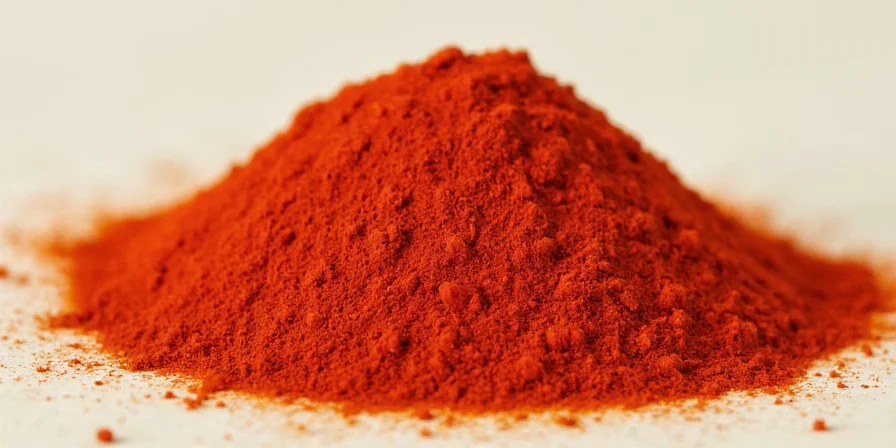Can Chili Powder Be Substituted for Cayenne Pepper?
When it comes to cooking, the right spices can elevate a dish from ordinary to extraordinary. Among the many spices available in your pantry, cayenne pepper and chili powder are two popular choices. But what happens when you find yourself out of cayenne pepper and only have chili powder on hand? Can chili powder be substituted for cayenne pepper? In this article, we’ll explore the differences between these spices, their flavor profiles, and how to best use them in your cooking.
Understanding Cayenne Pepper
Cayenne pepper is made from dried and ground cayenne chilies. It is known for its vibrant red color and fiery heat, typically ranging from 30,000 to 50,000 Scoville Heat Units (SHU). It adds a fiery kick to dishes and is commonly used in cuisines around the world, especially in Mexican, Thai, and Indian dishes.
Flavor Profile
- Heat: High
- Flavor: Bright, slightly fruity
- Usage: Great in spicy dishes, sauces, and marinades
Understanding Chili Powder
Chili powder, on the other hand, is a blend of ground dried chilies and spices. The exact composition can vary greatly, but it often includes cumin, garlic powder, and onion powder, which contributes to its more complex flavor profile. Chili powder’s heat can vary, but it is generally milder than cayenne pepper, typically around 1,000 to 5,000 SHU.
Flavor Profile
- Heat: Medium to low
- Flavor: Earthy, smoky, and slightly sweet
- Usage: Used in chili, stews, and as a seasoning for meats
Can Chili Powder Substitute Cayenne Pepper?
Now that we understand the basics of both spices, let’s address the primary question: can chili powder be substituted for cayenne pepper? The short answer is: yes, but with some considerations.
When to Use Chili Powder Instead of Cayenne Pepper
If your recipe calls for cayenne pepper and you only have chili powder, you can make the substitution, especially if you are looking for a milder flavor. However, keep in mind the following factors:
- Heat Level: Chili powder is generally milder than cayenne pepper. Use more chili powder to achieve a similar heat level, but do so cautiously to avoid overpowering the dish.
- Flavor Differences: The flavors are not identical. If the dish relies heavily on the sharp heat of cayenne, you may need to adjust other spices to balance the flavor.
- Quantity: A good rule of thumb is to start with half the amount of chili powder as you would cayenne and adjust to taste.
Substitution Guide
Here’s a quick reference table for substituting chili powder for cayenne pepper:
| Ingredient | Amount | Notes |
|---|---|---|
| Cayenne Pepper | 1 teaspoon | For a spicy kick |
| Chili Powder | 1/2 teaspoon (start here) | Add more if needed |
Adjusting Other Ingredients
When substituting chili powder for cayenne pepper, consider adjusting other ingredients to maintain the balance of flavors:
- Reduce any other spices that contribute heat or spice.
- Increase sweetness if necessary to counterbalance the reduced heat.
- Add acidity (like lime juice or vinegar) to enhance the overall flavor.
How to Use Chili Powder and Cayenne Pepper Effectively
Understanding how to use these spices effectively can enhance your cooking. Here are some tips:
Using Cayenne Pepper
- Spicy Sauces: Incorporate cayenne into hot sauces or marinades for an extra kick.
- Seasoning Meats: Rub on meats before grilling or roasting to add depth and heat.
- Soups and Stews: Add cayenne to soups and stews to elevate the flavor profile.
Using Chili Powder
- Chili Dishes: Perfect for chili con carne, adding depth and flavor.
- Seasoning Vegetables: Sprinkle on roasted vegetables for added flavor.
- Tex-Mex Dishes: Use in tacos, fajitas, and enchiladas for a robust flavor.
Conclusion
In summary, while chili powder can be substituted for cayenne pepper, it is essential to understand the differences in heat levels and flavor profiles. By adjusting the quantity and considering the overall balance of flavors in your dish, you can still create a delicious meal. Spice up your cooking with these tips and enjoy experimenting with various spice combinations!
Visual Guide

Image: A visual comparison between cayenne pepper and chili powder, showcasing their textures and colors.
Final Thoughts
Whether you reach for cayenne or chili powder, both spices can transform your dishes. Understanding their unique characteristics will allow you to use them effectively in your cooking. So, the next time you run out of cayenne pepper, don’t fret; your chili powder can come to the rescue!










 浙公网安备
33010002000092号
浙公网安备
33010002000092号 浙B2-20120091-4
浙B2-20120091-4